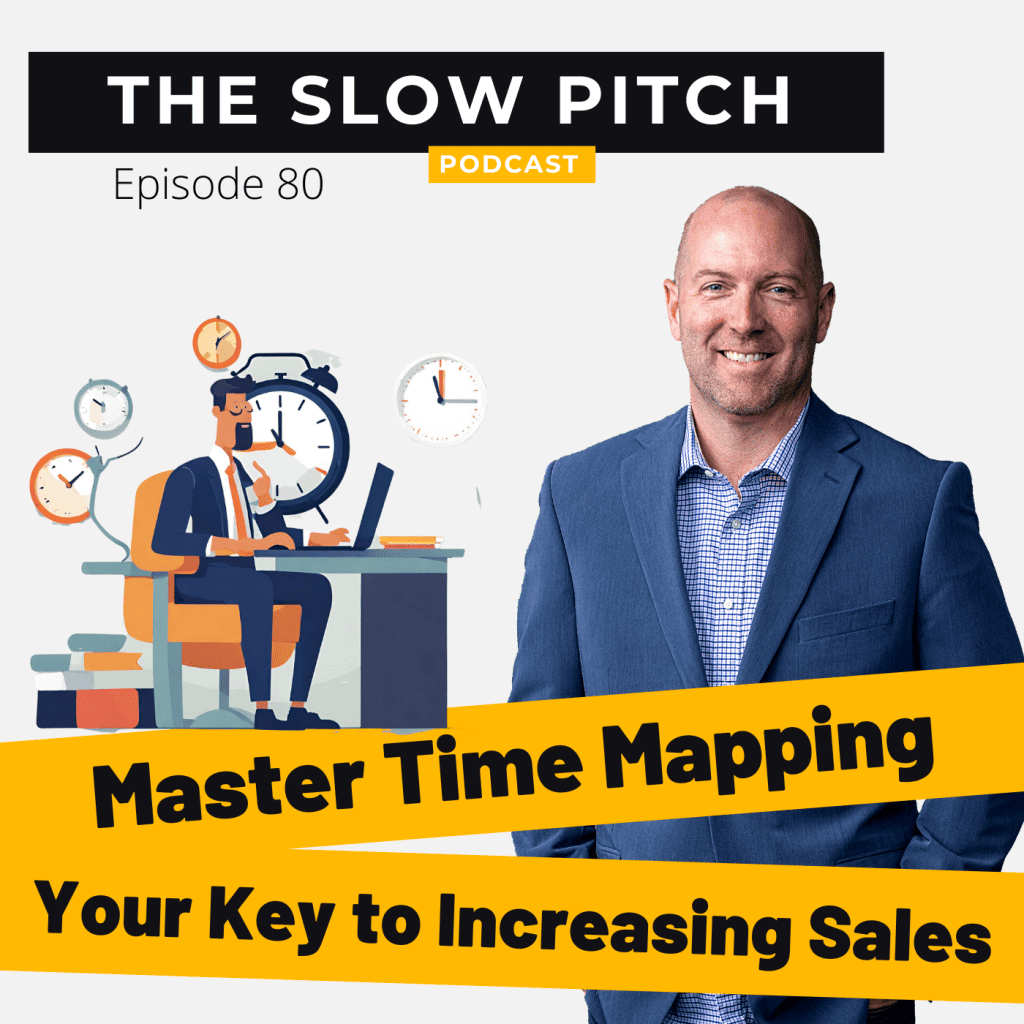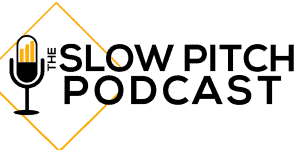Mastering Time Mapping: The Secret Key to Increase Sales


Notes
What is time mapping? And what does it do to increase sales? This is not your normal process of time management, it’s time mapping.
Time is of the essence and every minute counts. Every action you take can either propel you towards success or hold you back. That’s where the technique of “Time Mapping” comes into play, offering a strategic approach to help you make the most of your precious hours and ultimately increase your sales.
Understanding Time Mapping
Time Mapping is a powerful method that sales professionals can use to gain control their schedule and, in turn, boost their productivity. At its core, Time Mapping involves tracking and analyzing every activity you engage in as a salesperson over a specific period, typically two weeks. This simple record-keeping does the following:
- Identifies Time Detractors – By simply documenting your daily activities, you’ll begin to notice patterns and habits that might be consuming more of your time than necessary. These are your “time detractors” – tasks or activities that don’t contribute significantly to your sales goals. Time Mapping shines a spotlight on these areas, allowing you to make informed decisions about how to reallocate your time for more valuable tasks.
- Spotting Opportunities for Improvement to Increase Sales – As you review your Time Map, you’ll also pinpoint opportunities for improvement. You’ll find specific activities where you fall short, have room for improvement, or could be more efficient? Once you recognize these areas, you’ll be able to develop strategies that enhance your performance and your sales outcomes.
- Identify Optimal Sales Call Times – One of the key advantages of Time Mapping is its ability to reveal the best times of day for making sales calls. By tracking your activities and noting when your calls are most productive, you can strategically schedule your sales calls during these high-impact windows. This can significantly increase your chances of reaching potential decision makers and possibly lead to more closed deals.
Implementing Time Mapping in Your Sales Routine
To harness the power of Time Mapping, here are some steps to get you started:
- Commit to Two Weeks: Dedicate the next two weeks to diligently tracking your daily activities. Use a digital tool or a simple notebook to record everything you do, from client meetings to email correspondence.
- Categorize Your Activities: At the end of each day, categorize your activities into “productive” and “non-productive.” Productive activities are those directly related to sales, while non-productive activities are those that may be time-wasters. Be brutal in your assessment.
- Analyze Your Time Map: After the two-week period, review your Time Map. Take note of time detractors and areas where you can improve efficiency. Also, identify patterns of productivity and inactivity throughout the day.
- Adjust Your Schedule: Armed with insights from your Time Map, adjust your daily schedule to prioritize high-impact sales activities during your most productive hours. Minimize or eliminate non-productive activities wherever possible.
Time Mapping is a game-changing technique for sales professionals looking to optimize their time and increase their sales.
To be even more productive, I use ToDoist. Learn more about Todoist HERE.
Related Episodes and Information:
Episode 7: When Is The Best Time To Make a Cold Call?
Start Journaling To Jumpstart Your Selling (3 Simple Things to Do)
NOTE: Some links may be affiliate links, which means we get paid a commission when you purchase, but it the cost remains the same for you.
Music: "Clydesdale Funk" by Cast of Characters, written by: Dustin Ransom.
The Episode
Rob 00:08
All right, welcome back, everybody to The Slow Pitch. Today, we’re going to talk a little bit about how you spend your time. Everybody spends their time a little bit differently. And one of the things that I found is very easy to slip into doing things you’re not supposed to be doing, isn’t it? I mean, anybody else do that? Anybody else? Just spend 10 minutes on tick tock, or Facebook or something? Who knows what? Yeah, I’m sure you have. Let’s talk about this.
V/O 00:33
You were listening to The Slow Pitch Podcast, a podcast about selling less and closing more.
Rob 00:40
Alright, today we’re going to talk about time management, and probably not the same kind of time management that you’re used to hearing about, it’s going to be a little bit different. It’s going to be how are you going to manage your time and stay attentive to your time more than anything.
Rob 00:55
I hate to say this to salespeople out there, if you’re a sales manager, close your ears, but you know, salespeople we can, we can spend a little bit of time and get a lot of return on our time. In fact, I think you probably can do three hours, four hours of work in a day and still probably hit your sales goals. Am I wrong?
Rob 01:17
Alright, sales managers, you can come back now. Alright, so let’s talk about how we’re going to manage our time and how we’re going to measure this. So what I want you to do, if you’re driving this might be a little bit difficult. And maybe you have to come back to this. But think about this while you’re driving and take on a sheet of paper. And here’s what I want you to do, I want you to mark your paper up in a specific way. So there’s a couple of ways you’re gonna do this.
Rob 01:36
First of all, you’re going to write down a time that you’re going to be starting your day. So if you start your day at 8am, that’s your starting time you start at nine, if you start at whatever time of day doesn’t matter, that’s your time of day that you’re starting. And that’s when you first sit down to start working, what you’re going to do is you’re going to take that sheet and start to write down the activities that you’re doing starting at that time.
Rob 01:55
So at 8:00, if you have started your day, and you sat down at your computer, you write down 8:00, and then next to 8:00, you’re writing down a little notation about what you’re doing. So if you sat down, you started up your computer, and you immediately went to emails to follow up and see what’s going on, you probably got some emails overnight. So I want you to write down email.
Rob 02:15
And then I want you to put a dash and say what kind of emails you’re working on, is it clean up email, you know, deleting stuff that doesn’t belong and getting rid of stuff. And so that’s just like, you know, your basic email stuff that you’re doing. So from 810 to 815, you were writing emails to the following people and you write down there jot down their names or company names be make this a very quick thing.
Rob 02:36
This is not to be detailed, this is a very simple process. But it also needs to be clear as to what you do when you look at it two weeks from now, because it might be two weeks from now that you’re gonna look at this, you might also look at times that you’re writing your estimate.
Rob 02:48
So if you’re starting at eight, you’re going through your emails, by 830, you’re starting to make some phone calls, then you should write down phone calls, if you’re starting to work on researching something, because eight o’clock or 830 is not the best time to be doing phone calls, then you’re gonna start to write down research and what research you’re doing.
Rob 03:03
So a little bit ago, I spent some time doing some research in my area of companies that are in a specific manufacturing field, who I could speak to that have a very targeted type of manufacturing that they’re doing. So once I started putting that list together, my item that I wrote down at, let’s say 30 would be researched manufacturers in whatever targeted field that is, and I started to I spent a good hour on that, let’s say and so before I’ve made any calls, I needed to put the list together.
Rob 03:31
And then I needed to start putting together information about that individual that I’m making a phone call to. So if I was going to make 10 calls, I’d have to research 10 Different people do a brief, here’s what I need to do to talk to this person who I need to talk to what their position is, what I’m going to want to know is kind of some questions that I should be asking that are specific to their industry so that I can at least speak their language. If I need to understand their industry a little bit, I might do a little research on that.
Rob 03:56
But when I’m making those phone calls, I’m going to start to write down when I start making those calls. And when I write down what I’m doing during those times, I’m also running down this was not an effective call, because so I might drop myself a little note I forgot to ask about and I didn’t follow up on this question, whatever it was so that as I go through the day, I’m building and improving on what I’ve already done for that previous call.
Rob 04:16
As you go through the day, one of the things you might do at let’s say 10 o’clock, maybe you’ve been working for a little while, you’ve been very focused and all of a sudden you realize I need a cup of coffee again, I just need something to drink or something. So you get up you go over to the kitchen area, you grab a cup of coffee, you may have countered, countered somebody and talk to somebody, whatever the case might be right you whatever you’re doing during that 10 o’clock till let’s say 10:15 You are writing down coffee.
Rob 04:45
Right now, normally I would say coffee’s for closers, but you know, hey, you’ve worked hard for those first two hours. Let’s go. So you took your break. You come back now you’re doing your next thanks, whatever that might be. You’re writing down from the time that you start work to the time you end work, every task that you’re doing.
Rob 05:03
Now, again, this is not to be detailed, this is not to be in such detail that you have to know every little second of what you’re doing. It’s usually a different this time to this time, here’s why this time to this time, what was effective, what wasn’t effective a little bit, and you’re writing down notations about who you’re talking to what things you’re learning along the way, right, what you’re going to find is that as you go through the day, knowing that you have to write down what you’re doing, you’re going to be much more focused person for that day, that’s good.
Rob 05:31
As you go to the next day, and you start doing that all over again, you might find, you know, I’m going to, I’m on tic tac, or I’m on whatever right you’re watching YouTube videos are, all of a sudden, you’re off on a tangent that you didn’t mean to be on. Well, when you go to write that down, it’s going to snap you back into place, there’s so many things that can distract us.
Rob 05:47
But honestly, if you start to be focused in your time, during the times that it makes sense. So if you look at your list of times the things that you’re doing, and you find that you’re making phone calls from 8:30, to 9:30, and from 11:00, to 12:00, and from 3:00 to 4:00, if you find out that you’re making much more inroads during three to 4pm, then maybe you need to expand that time section and reduce the other time section, maybe you don’t get a hold of anybody between 8:30 and 9:30.
Rob 06:11
But at three o’clock, you get ahold of everybody, or you get a hold of 80% or 85%. That’s a big difference. And so knowing that when you track it, what you’re doing, you’ll start to learn when you should be making phone calls, you’ll also learn when to do other things that are more getting you ready for those phone calls or getting ready for those meetings, you might have to spend some time writing some estimates out right or are we spent some time putting some proposals together, if that’s what you’re doing during that time, you’re writing that down.
Rob 06:38
But again, is that during a time of day, that makes sense, you should not be doing that, when you’re supposed to be doing phone calls that are very productive, this tracking is going to keep you focused, and you’re going to find out that when you have to do tick tock or something else, you’re going to realize I’m wasting time.
Rob 06:56
What’s going to happen is you’re going to go through your day, and by two o’clock, you’re going to like I have nothing else to do today, I can do the rest everything else and waiting for other people, you might find that some of that stuff starts to happen. So now what Well, now you can do more research for the next day, or you can start to get ahead, suddenly, you’re a super salesperson, because you have taken and maximized your time and started to work ahead. And the next thing you know, your pipeline is suddenly full.
Rob 07:24
And when your pipeline is full, you become more confident, and you will actually start to close more. So remember, when you’re going through this track your time, be more productive, and things will improve. This is going to take you some time, because after two weeks, you’re going to get a lot of data and analyze that data, find out what you should be doing differently and start to work differently as you move forward.
Rob 07:43
If you found this episode to be helpful, and you can think of somebody that might need this information, please share this episode with them. All you do is hit the share button, send a copy of this to them and they will probably appreciate it if you do that. This is one of those situations where you’re helping somebody else who might have struggled or could be struggling. And this is a simple fix for a lot of things. So please share that. Until next time, don’t forget to slow down and you’ll close more.
V/O 08:07
Thank you for listening to The Slow Pitch. Do you have a question about sales? Call or text your question at (608) 708-SLOW. That’s (608) 708-7569 or you can email them to Questions@TheSlowPitch.com. Slow Down and Close More.
Rob 08:57
Thanks as always for listening today. If you’d like this podcast, please subscribe and leave us a review. We really appreciate it. Follow us on Twitter, Instagram and Facebook at The Slow Pitch. We were mixed today as always by Johnny Polakis and we were produced by High Gravity Studios. Music credits and other notes are in the show notes section on TheSlowPitch.com and we’ll be back with another episode soon.








